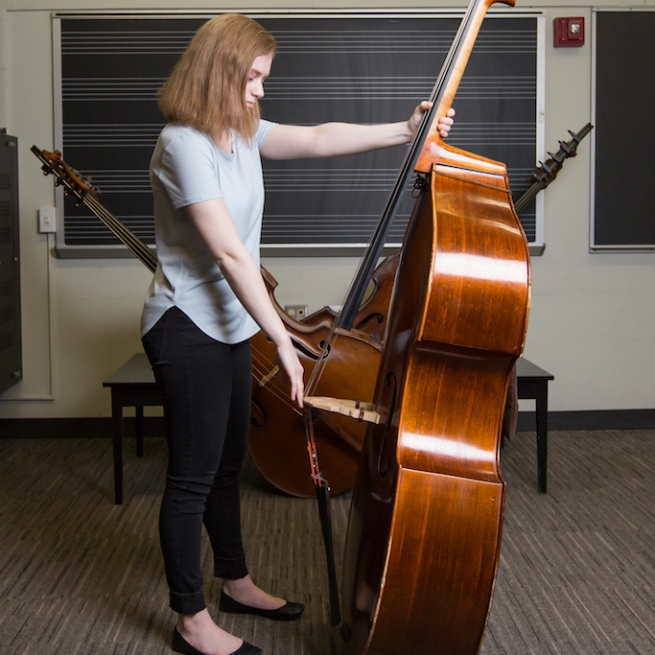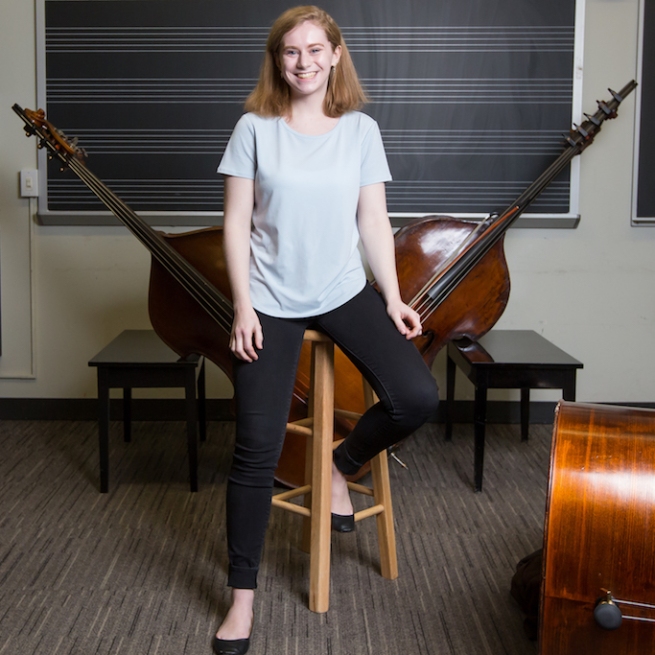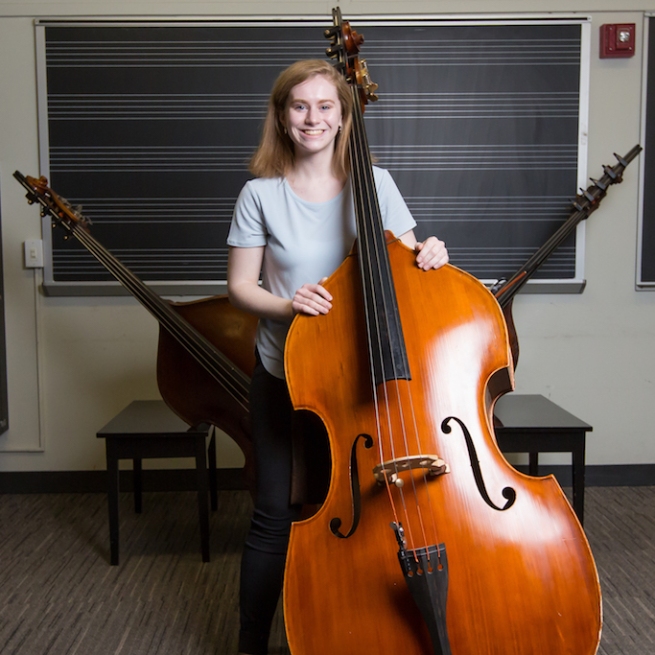Step One: Adjust the end pin so that your right hand touches the bridge somewhere between the tips of your fingers and your knuckle while the bass is facing you. For the teacher: This will vary depending on the physique of the student and dimensions of the instrument.

Step Two: If your stool has four legs, situate it so that one of the four legs is facing forward. Sit near the edge of the stool with your right foot placed firmly on the ground with a slight bend in the knee, and the left foot placed on a rung. For the teacher: If there are two rungs, generally the top rung is the best place for the left foot. Ideally, the foot should be placed high enough for the left leg to support pressure placed on the strings and fingerboard but low enough to grant full access over the shoulder of the bass for thumb position. In most cases neither rung is ideal. For optimal performance, it is advisable to attach a small piece of wood to two of the legs of the stool as a rung, so the student can have both full access and support. This will take some experimentation by both the teacher and the student.

Step Three: With both of your hands on the back shoulders of the instrument, hold the bass approximately at arm’s length and bring it in to your body and between your legs. Turn the bass so that the back of the bass is resting on your left leg and the right side of the bass is resting on your right inner thigh and pelvis. For the teacher: These contact points are only guidelines and will vary from student to student.


Step Four: To check the height and angle of the bass, hold the neck with a fist in your left hand just below the peg box and nut. Point toward your head with your index finger. If your finger is pointing into your left ear, the height and angle are approximately correct. For the teacher: The height and angle of the bass also will vary depending on the student and the bass. It is good to experiment with the height and placement of the end pin, because these will both affect the height and angle of the bass. There are four general guidelines for the height and angle. First, the student’s left elbow should not be higher than the shoulder while playing in the lower positions. Second, the left shoulder of the bass should be low enough to allow easy access to the end of the fingerboard. Third, there should be enough clearance so the student can draw a full down bow on the E string without hitting his/her leg, and, fourth, the student’s right hand should be able to hold the bow comfortably between the fingerboard and bridge.

A Word about the Stool
Generally speaking, a wooden stool with four legs and two or more rungs for each pair of legs is very good for a student. Some players find that a cushion makes playing much more comfortable. If the student is fairly short, it is best to wait until he/she is taller before using a stool. The stool should not be so high that the student cannot place both feet comfortably on the ground while sitting on the edge of the seat, and it should not be so short that both knees are too bent. Once again, these things should be determined by a qualified teacher who will take the student’s physique into consideration.

